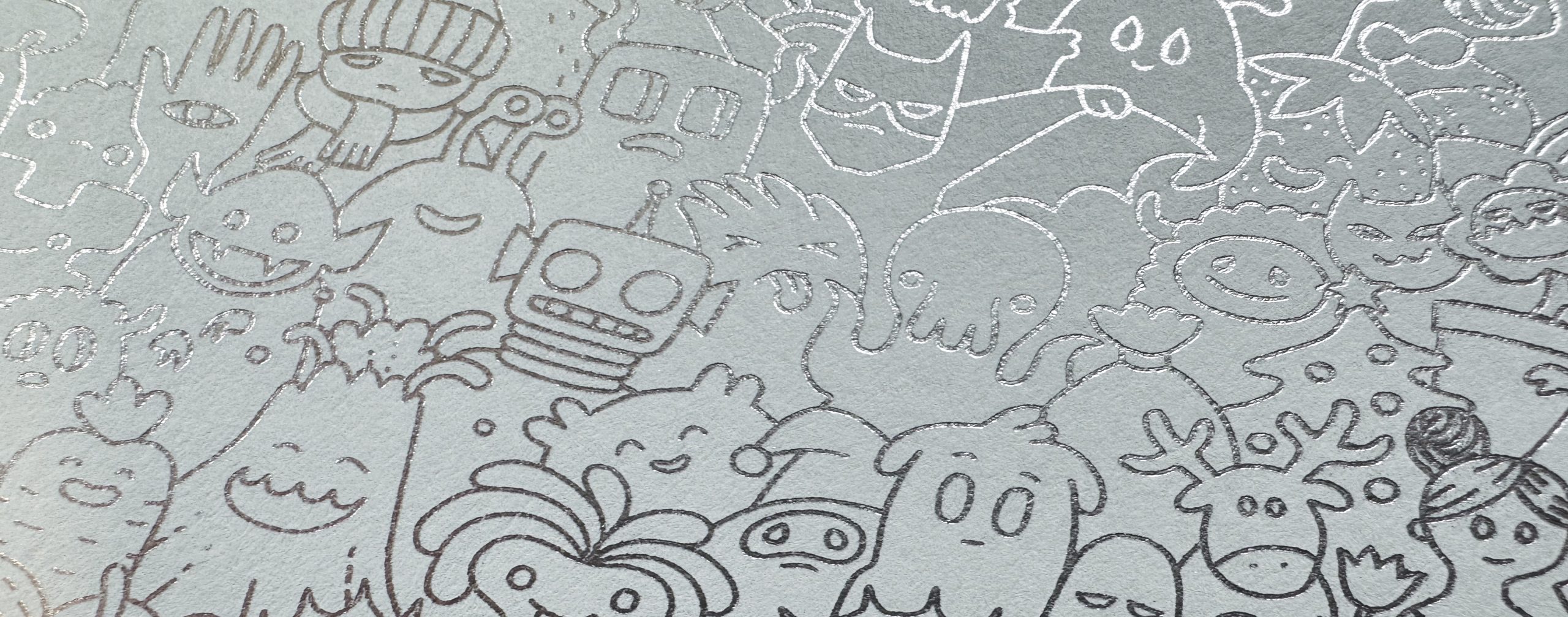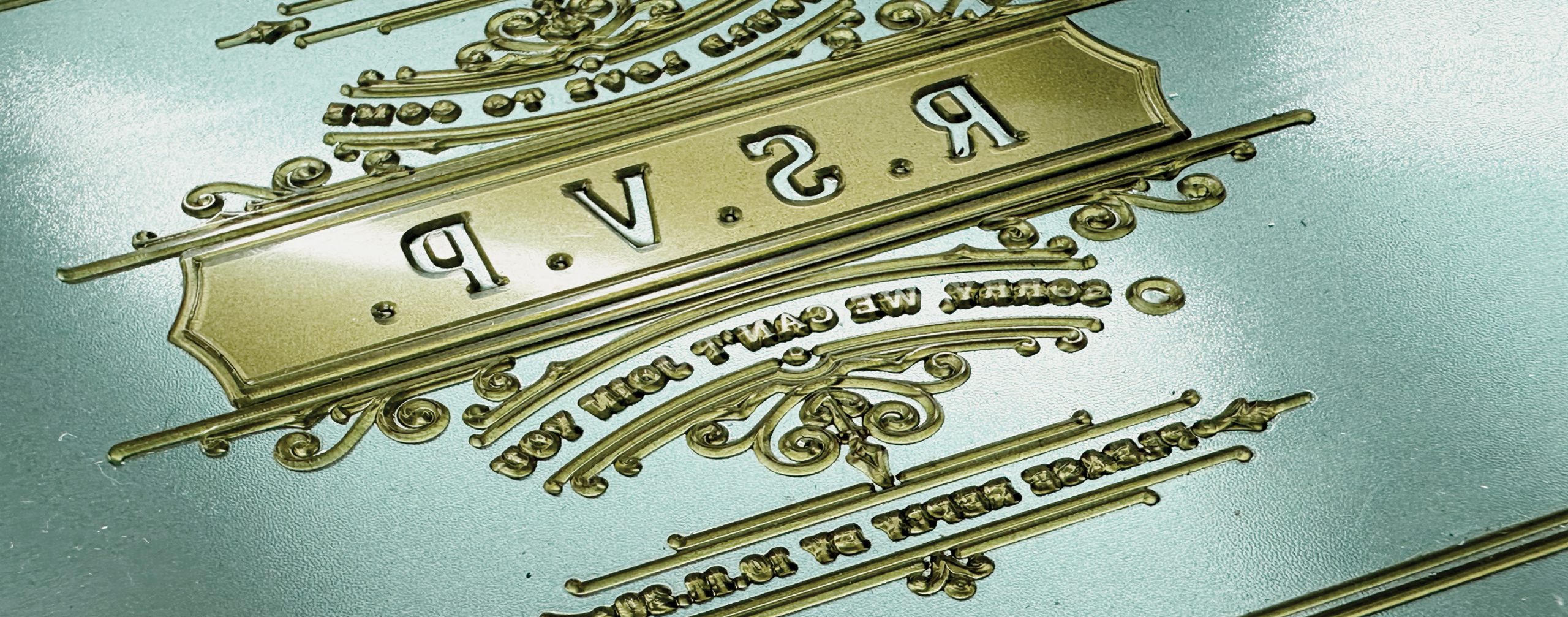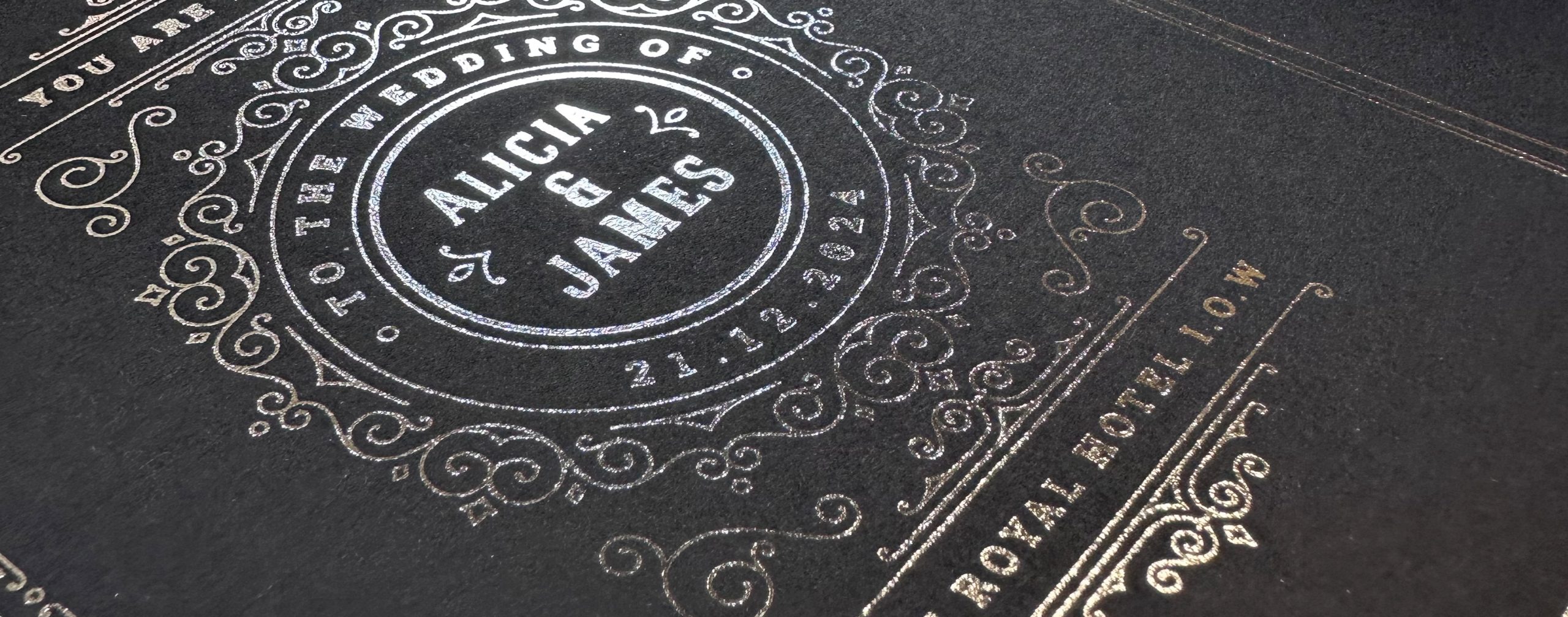Can you use photopolymer plates to hotfoil?
Yes, it is possible to use photopolymer plates for hot foil printng. Hot foil printing is a process where a heated die is used to press a foil onto a substrate, creating a metallic, glossy or matte effect. This process is often used in the printing of stationery, packaging, labels, and other products where a decorative or eye-catching finish is desired.
To use photopolymer plates for hot foil stamping, the plate is prepared in the same way as for any other printing process, using a negative image of the desired design. The plate is then mounted onto a metal block, which is heated to the appropriate temperature. A roll of foil is placed between the plate and the substrate, and pressure is applied with the heated block, causing the foil to adhere to the substrate in the desired design.
While photopolymer plates can be used for hot foil stamping, it is important to note that not all photopolymer plates are suitable for this process. Plates with deep relief or large areas of solid coverage may not work as well with hot foil stamping, as the heat and pressure of the process can cause the plate to distort or deform. In addition, the type of foil used and the pressure and temperature settings of the hot foil stamping machine may need to be adjusted to achieve the desired result with a photopolymer plate.
What is the best artwork for creating hotfoil photopolymer plates?
The best artwork for creating hot foil photopolymer plates is vector-based artwork created in a program such as Adobe Illustrator. Vector-based artwork is created using mathematical equations to define the shapes and lines of the design, rather than pixels, which ensures that the design remains sharp and crisp even when scaled up or down.
When creating artwork for hot foil photopolymer plates, it is important to keep in mind that the process relies on the creation of raised areas on the plate to transfer the foil onto the substrate. This means that the design should have areas of solid coverage and defined lines and shapes that can be easily translated into a raised surface.
Additionally, it is important to consider the size and scale of the design in relation to the size of the plate and the substrate. Hot foil printing is often used on small areas of a design or on specific elements, such as text or logos, so the design should be created with these limitations in mind.
Overall, the best artwork for creating hot foil photopolymer plates is a clean, simple design with defined shapes and lines that can be easily translated into a raised surface. Vector-based artwork is ideal for this process, but high-resolution raster artwork can also be used if necessary.

Tips for creating artwork for hot foil photopolymer plates
Here are some tips for creating artwork that is well-suited for hot foil photopolymer plates:
- Use vector graphics: As mentioned earlier, vector graphics are ideal for creating photopolymer plates because they can be scaled up or down without losing quality. Use vector graphics software like Adobe Illustrator or Affinity Designer to create your artwork.
- Keep it simple: The more complicated your design, the more challenging it may be to create a successful photopolymer plate. Try to keep your design as simple as possible by avoiding fine details, textures, and gradients.
- Use high contrast: Your design should have clear, high-contrast lines and shapes. Avoid designs with low contrast, as they may not produce a clear image when printed with a photopolymer plate. 100% Black artwork with fonts outlined is the only way forward.
- Choose appropriate fonts: Make sure your fonts are large enough to be easily read when printed with the photopolymer hot foil plate. Avoid using thin, delicate fonts, as they may not translate well to the printing process.
- Work with a printing specialist: If you are unsure about how to create artwork for photopolymer plates, work with a printing specialist who can provide guidance and advice. They may also be able to suggest specific design elements that work well with hot foil stamping.
By following these tips, you can create artwork that is optimized for hot foil photopolymer plates and produce high-quality, eye-catching prints.

Settings
These following settings are what we have successfully used when foiling with our polymer plates. They have been tested with various Foilco foils with success but as I mentioned above the dwell times can vary depending on which type of foil you choose to use and the board you will foil on to.
Temp – 130 degrees
Foil – Foilco, various shades
Boards – Various – Colorplan, GMUND Cotton, Somerset Cotton, GMUND Bauhaus, GF Smith Transclear, as well as acrylic sheet, MDF and Wood Veneer.
Dwell time – Can vary depending on the foil/board combination and so far, are varying between a fraction of a second and 10 seconds. Start off with a small dwell time and build up until you have the result you desire.
Other thoughts
This is something that we’ve been working on for a while to get it just right and of course successful. Finally, we have a plate that we are happy with and one that can retain the heat in order to do short run foiling jobs, but there are limitations.
Polymer plates will not be a substitution of hot foil mag or brass plates, if you are looking to print fine lines and small text on a long run. There needs to be enough polymer in the part of the design that can retain heat to transfer the foil to the board.
The dwell times when using certain types of board and foils can be increased, some foil and board combinations will only need the same dwell time as standard foiling dies, but different combinations may need a little longer. We’ve tested various boards and foils and the longest dwell time that we’ve used is a count of 10 or 10 secs, depending on how quickly you count.
Foiling with polymer is slightly different to foiling with mag plates, we only recommend using polymers if you are confident in the first instance with your foiling machine and with using mag foiling plates. The initial set up is the same and the plates are attached using a small amount of die bonding tape, in the corners and we like to add a piece on the long edge. Back off your machine so that you don’t run the risk of squashing the plate when you’re mounting it, you can always adjust for impression more when the plate is stuck.
The plates themselves are more delicate than traditional mag plates, we are currently using a version of the KM95 plate that has been developed slightly differently, this plate is 0.95mm thick, it means you can still get a level of impression, the steel backing is thinner which means then can be bent if too much force is use attaching and removing them from your press. That said they are flexible enough to be bent back into shape and re-used for future reprints.
An amount of impression is still achieved using polymer foiling plates, but it is not as deep as mag plates and some crispness can be lost, but this can be solved by reducing the dwell time. Having said this, they are suitable for a large range of work on a varying number of boards.
I like to leave the die on the press for an hour before using, it just helps it acclimatise and gets rid of any moisture if it’s been sitting in a Royal mail office.

